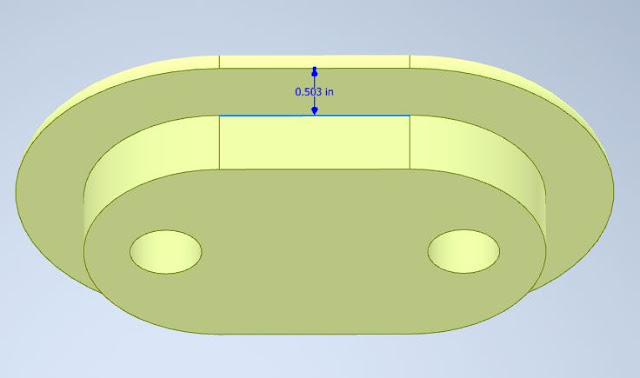Now that the engine is happily rebuilt and running, I've started planning for what I need to do to get it back in the boat. This is a huge task that brings the phrase "How do you eat an elephant" to mind. The answer is of course: "One bite at a time", so the first bite in the process is to get the tarps and part of the frame off to make overhead room for hoisting the engine back in.
Unfortunately, the deck isn't wateright at this point and that needs to be done before the tarps come off, so I guess the real first bite is: Getting the deck watertight. The hatches and most of the deck equipment are well sealed and I have re-plumbed the scuppers, but the chainplates are out of the boat and all 7 chainplate assemblies and underdeck tie rods have to be reinstalled. On paper, it seems like a simple job, but reality always gets in the way.
I pulled the chainplate assemblies out of storage and took them apart to see if anything needed replacing. I should note that these are not your standard stainless or bronze bar chainplates that fit through a slot in the deck and bolt to a bulkhead. These are NavTec chainplates which consist of a deck plate with 2 bolts that go through the deck and connect to an aluminum block which connects to a tie rod which connects to a bulkhead mounted chainplate.
In theory, they are a nice solution because you don't necessarily need a bulkhead located directly where the chainplate goes through the deck. They also only have 2 bolt holes that go through the deck and are easier to seal than a slotted bar with a rectangular hole in the deck. However, what I found when I took apart the chainplate assemblies was less than ideal.
Most of the NavTec chainplate system is made up of nitronic 50 which is essentially a super corrosion resistant stainless steel (better than 316) and a yield strength nearly twice that of 316 stainless. All of these parts look brand new and will be re-installed as is, but there is an aluminum backing block that ties the above-deck chainplate to the tie rod and on 4 of the 6 blocks, I found serious corrosion that would need to be addressed in several ways.
First, the backing blocks would need to be replaced, but I wasn't able to find a source for replacement so I decided to digitize the blocks and have new ones machined. I haven't used CAD in years so I was pretty rusty but my son has a Autodesk Inventor license and he helped me get up to speed on the software and once I got the hang of it, I was able to get it done without issue. To make sure my design was within tolerances of the originals, I 3d printed one of the blocks in PLA to make sure everything fit and once I was satisfied (I did a few iterations), I sent the designs off to a machine shop to CNC them out of 7075 aluminum with a hard anodized coating.The second, and more concerning issue was why the blocks corroded in the first place. The only way that could happen was if water was making its way down from the deck to the blocks mounted underneath. A quick inspection of the deck revealed that the core underneath the chainplates on deck was crushed (probably from overtightening the tie rods that attach to the bulkheads). I was surprised that an area as crucial as the chainplates would have a plywood core and not solid glass, but I shouldn't be surprised by that sort of thing anymore. The Niagara is a well built boat and a lot of thought went into isolating through hulls from the core, but I feel that they missed the mark with deck fittings. Time to get to work.
When I re-cored the decks on my Alberg 35, I epoxied in 9 layers of 1708 biaxial cloth where the chainplates went through the deck so no core could be exposed. While this was effective, it was part of a bigger, messier job so I didn't have to be careful about the surrounding deck surface. For this job I wanted to do something similar, but without having to re-core the whole deck. After some discussion on several online forums, I settled on the idea of creating oval inserts with flanges made of G10 plate that would replace the existing deck top skin and core material. The inserts would be .25" proud of the deck and would create an 'island' around each chainplate that would help keep water out of the holes. I drew up a schematic of what I wanted it to ultimately look like and then did a few 3d prints to make sure my measurements were correct before I started cutting expensive G10 plate for the actual installation. Next time I'll go into the gory details of cutting holes in deck and epoxying the 'island' inserts into place.





No comments:
Post a Comment